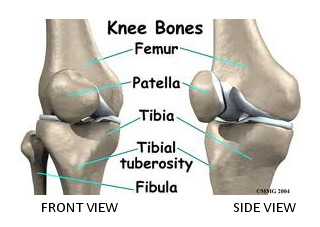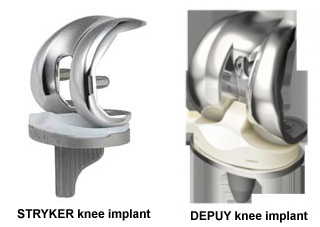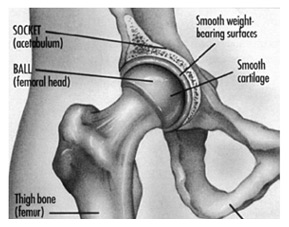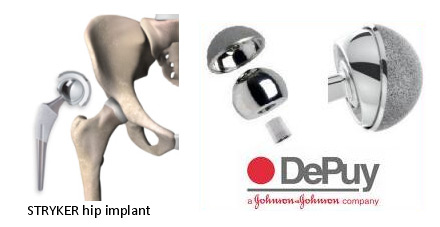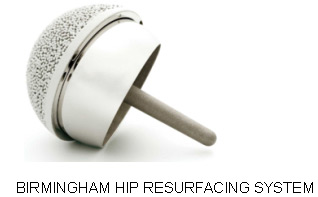Liver transplants in India
A liver transplant procedure is a very complex surgery that is very professionally done at select hospitals in India with a success rate of 95% for the patient and 100 % safety for the donor. These success rates are on par with the best liver transplant centres internationally. India's leading liver transplant surgeon performs between 16-18 liver transplants every month, perhaps the highest number of liver transplant surgeries led by any single surgeon anywhere in the world.
Donor for liver transplant in India
The waiting list for liver donations from cadavers (dead persons) is long in India and is therefore not a practical option for foreign patients. It is extremely safe for a living person to donate a portion of his liver to the patient. Within just two weeks, the donor's liver grows back to its original size with full functionality. Liver donation does not place any lifestyle or dietary restrictions on the donor after the recuperation period of one month. To donate a portion of the liver for a patient, the donor must:
- Be between the age of 18 to 55
- Have a weight of 50-85 kilograms
- Must be a close family member ( parent, spouse, child or brother/sister) of the patient and must be a free and willing donor
- Must have normal liver function with blood group matching
- The size of the donor's liver must be large enough, so that half of the liver is sufficient in volume for the patient
Investigations and Preparation for Liver Transplant in India
This process takes approximately 7 days. The liver transplant surgeon in India would first confirm the diagnosis of liver failure and the need for liver transplant. Secondly, the patient's general fitness for the surgery (in terms of the functioning of heart, kidneys, lungs, etc) is assessed. Clinical tests are also conducted to verify that the patient is not suffering from any infection which will affect the success of the transplant. Finally, the patient and the family are provided with detailed advice about the transplant procedure, the follow-up process and care for the patient during recuperation period.
Liver transplant surgery in India
The liver transplant is a very major operation and takes between 6 to 8 hours. A team of medical professionals, including a minimum of three surgeons and two anaesthetists, are required for this surgery. During the operation, the patient's diseased liver is removed after first disconnecting major blood vessels and the bile tube. After the healthy liver section is put in place, all the blood vessels and the bile tube are reconnected.
Recovery after Liver Transplant Surgery in India
The patient is transferred to the ICU where he will be put on a respirator for at least two days. The patient will be put on immuno-suppression drugs to prevent the new liver from being rejected by the body. ICU stay will be approximately 3 to 10 days, depending on the speed of recovery of the patient. The patient is then moved to a special transplant recovery unit where he will be monitored for two to four weeks. After recuperation at home for a month, the patient is gradually able to return to his normal routine.
Special infrastructure for liver transplant Surgery in India
- India's leading liver transplant centre conducts perhaps the world's highest number of liver transplants (16 to 18 every month).
- This liver transplant centre is part of a dedicated 150 bed facility, exclusively for liver diseases
- The dedicated liver transplant ICU has 22 beds, perhaps the largest of its kind in the world
- The hospital has a special centre for liver diseases amongst children and liver transplants for children
- The liver transplant centre has four state-of-the-art operating theatres, with the capacity to perform 3 liver transplants every day
- A Research Centre which is working on stem cell therapy, bio-artificial liver, new techniques for the early detection of liver cancers, etc
Kidney Transplants in India
Kidney Transplants in India
Kidney transplants are widely performed at leading hospitals in India. It is estimated that approximately 3500 kidney transplants are performed every year in India, primarily using kidneys from living donors. Kidney transplants are done very safely in India with success rates on par with international benchmarks. The success rate of kidney transplants is linked to the general health of the patient, the compatibility of the donated kidney with the patient, the quality of the donated kidney, and finally the surgery itself and post-surgery management of organ acceptance.
Donors for Kidney Transplants in India
Kidney donations primarily fall in three different categories:
Cadaver donations (from deceased persons)
These form a very small percentage of kidney donations in India. With a very long wait list, this category of conditions is not practical for foreign patients
Donations by living, related donors
This category of donations (from a parent, child or brother/sister) is the most accepted form of donations for a kidney transplant in India. Donations outside of this immediate family circle are classified as unrelated donors for legal purposes
Donations by living, unrelated donors:
While donations by the husband or wife of the patient is freely allowed, donations by other unrelated donors requires obtaining of special permissions, which are granted at the sole discretion of the government, which has to be fully satisfied that there is no commercial angle whatsoever to the donation of the kidney.
Finding a Suitable Kidney for Transplant
Commercial donation of kidneys in India, whether to an Indian National or to a foreigner, is strictly prohibited in India. Hence, the only option for a foreign patient requiring a kidney transplant is to bring along a kidney donor from his own country. Ideally speaking, the kidney donor should be a close relative (parent, child, brother/sister, or wife). Beyond the legalities, a suitable kidney would be one where in:
- the donor and the patient have a compatible blood group
- the donor and patient also have a tissue type, HLA match( this is ideal, although modern medicine is able to manage noncompatible tissue types also, with some constraints)
Investigations and Preparation for Kidney Transplant in India
Both the patient and the kidney donor will undergo a series of tests at the hospital in India to reconfirm compatibility. Even in those cases where there is HLA and blood group matching, the doctors will perform a cross match test. If the cross match test is positive, then the patient's immune system will attack the donated kidney, even if there is blood group matching and HLA compatibility. The kidney transplant team in India will consider all the results before proceeding with the procedure. Once it is decided to go ahead with the kidney transplant, the legal paperwork is also completed. Medical investigations will take approximately 1 week. If the donor is a close family member of the patient, legal formalities are minimal. If the donor is an unrelated person, the procedure for obtaining permission from the government will take a minimum of three weeks, with the final decision resting with the government.
Kidney Transplant Surgery in India
The kidney transplant procedure takes approximately 2 to 3 hours and is performed under general anaesthesia. The diseased kidney is usually left in place, while the new kidney is placed either in the left or right groin. The major artery and vein are connected to the new kidney. Catheters are placed to drain both the bladder and the new kidney and may remain in place for approximately a week. Production of urine commences almost immediately for about two thirds of kidney transplant patients. For about one third of kidney transplant patients, the new kidney may commence production of urine only after several weeks. In the days following the surgery, blood tests are done to assess the performance of the kidneys. Ultrasound tests are also done to verify that blood flow is adequate to the kidney and that urine is draining properly into the bladder. The nephrologist will also keep track of signs of rejection of the new kidney by the patient's body.
Recovery after Kidney Transplant Surgery in India
Following kidney transplant surgery in India, the patient would normally need to stay in hospital for about a week to 10 days after the procedure. The kidney donor is normally discharged from the hospital four to five days after the surgery. As the patient's immune systems are suppressed to reduce the chances of rejection of the new kidney, the patient is also susceptible to infections on account of lowered body defences. For this reason, the patient is kept in a carefully controlled environment which minimises exposure to infections.
After discharge from hospital, for the next couple of weeks, the patient will need to visit the hospital regularly for blood checks to monitor the performance of the kidney. The level of immune suppression drugs will also be monitored.
Three months after the kidney transplant surgery, all going well, the patient will only be required to report on a monthly basis for monitoring. The patient will also be put on medication, if required, for control of cholesterol and BP as these two conditions can affect the functioning of the new kidney.
Bone Marrow Transplants in India
Bone Marrow Transplants in India
A Bone Marrow Transplant is a non surgical procedure in which damaged or diseased bone marrow is replaced with healthy bone marrow stem cells. This complex procedure is performed at many of India's leading hospitals. The success rate for bone marrow transplants in India is on par with international benchmarks.
A bone marrow transplant is usually offered as a solution for certain kinds of cancers as well as some diseases which affect the production of blood cells. Hospitals which perform bone marrow transplants in India have the requisite infrastructure as well as highly experienced haematologists and haemaeto-oncologists to perform the procedure successfully.
Bone marrow transplants can be one of the following three types
Autologous Bone Marrow Transplant, in which the patient's own stem cells are removed before chemotherapy or radiation therapy. These cells are administered back to the patient after completion of chemo/radiotherapy.
Allogenic bone marrow transplant in which stem cells are provided by a donor, most often a brother or sister, since the genetic makeup would be similar in this situation.
Umbilical cord blood transplant in which stem cells are removed from the umbilical cord of a newborn baby and stored till they are needed for transplant. This method is still in the initial stages of application and review.
Investigations and Preparation for Bone Marrow Transplant in India
Hospitals in India which perform bone marrow transplant follow a very rigorous procedure in investigating and preparing patients for the procedure. In the case of allogenic transplants, several special tests including HLA testing is done to verify whether there is a good match between the donor and patient. The overall health of the patient is also an important factor while considering the possibility of a bone marrow transplant in India.
The therapy that the patient needs (chemotherapy/radiotherapy) is completed before the bone marrow transplant procedure.
The Procedure
Bone marrow transplant procedure in India comprises two major activities: the harvesting of the stem cells and the transplantation of the stem cells.
The procedure for harvesting stem cells is the same for both autologous and allogenic bone marrow transplants in India. Under general anaesthesia, bone marrow is extracted from major bone structure is such as the hip and the spine. There are no surgical incisions, just skin punctures to insert the needles. The harvested stem cells may need to be processed to make them fit for transplantation.
In the second phase, the actual transplantation procedure is performed. All hospitals that perform bone marrow transplant procedure in India have a special and segregated bone marrow transplant unit which is highly sterile. This is because bone marrow transplant patients are susceptible to infections on account of lower levels of immunity.
Prior to the procedure, catheters are inserted to allow administration of drugs, nutrition etc. Patients would receive medications such as antibiotics and antivirus to prevent as well as to treat infections of any kind. Patients scheduled for allogenic transplant will also receive special medications to prevent rejection of the donor cells by the patients immune system.
Healthy stem cells are introduced into the body through the bloodstream, and no surgery is normally necessary. The stem cells upon reaching the bone marrow, engraft there and after a couple of weeks commence production of normal blood cells.
Recovery after Bone Marrow Transplant in India
The period of two to four weeks following bone marrow transplant in India is a critical period for the patient, when he is most susceptible to infections. Access to the patient is rigorously controlled to limit exposure to infections. The grafted stem cells may begin producing blood cells two to four weeks after the transplant.
Following discharge from the hospital, patients from foreign countries will still need to stay close to the hospital for a period of three to four months. During this time there would be regular checkups at the hospital to monitor engraftment of the stem cells, look out for signs of graft rejection, etc. Foreign patients may return to their home country at the end of this period. It would take at least six months, sometimes up to a year, for patients to return back to normal work cycles.
Pancreas Transplant Surgery in India
Pancreas is that organ of the body which produces insulin. The first pancreas transplantation surgery was conducted in 1966.
This procedure involves the implantation of a healthy pancreas into the body of the patient, who is usually suffering from Diabetes Type I. The pancreas donor can be a deceased person or a living donor. Several tests are performed to verify compatibility between donor tissue and the patient's body. The patient’s original pancreas is left in place, while the donated pancreas is grafted into the patient's body. Most transplants of pancreas happen simultaneously with kidney transplantation, ideally with the kidney and the pancreas coming from the same donor. However, it is also possible to have a pancreas transplant done independent of a kidney transplant surgery.
Following the transplant, the patient would be on immunosuppressant medication for life, since there can be graft rejection problems at any stage during the life of the patient. The success rate of Pancreas transplant surgery in India is estimated to be in line with the international benchmarks, where over 95% of transplant patients are alive one year after surgery, with approximately 85% of pancreas functioning successfully one year after surgery. Long-term studies are ongoing
Cornea Transplant Surgery (Keratoplasty) in India
The cornea, located in the front of the eye, is a transparent tissue that allows light to enter the eye. If the cornea becomes cloudy or irregular in shape, the result can be significantly diminished vision or even blindness. The treatment for diseased corneas is corneal transplantation, using cornea donated by deceased human beings.
Cornea transplant is a very routine and successful procedure in India. The success rate of cornea transplant in India is well over 95%. To some degree, the extent of vision restoration is limited to the functionality of the other parts of the eye.
During the cornea transplant procedure in India, the eye surgeon removes a circular portion from the centre of the patient's cornea and substitutes it with a similar section from the donor cornea, which is then fixed using sutures. This procedure is known as Penetrating Keratoplasty.
In Lamellar Keratoplasty, instead of replacing the entire cornea, only some layers of the cornea are replaced, using the healthy layers of the patient's own cornea intact. This eye treatment procedure, widely performed in India, is an advancement over the Penetrating Keratoplasty procedure
Endothelial Keratoplasty is a surgical procedure which can be performed with just one or even no sutures at all. In this procedure, the patient's endothelium is replaced with a transplanted disc of posterior stroma/Descemets/endothelium (DSEK) or Descemets/endothelium (DMEK).
This new technique is particularly useful for the treatment of the endothelium, which is the inner layer of the cornea. Owing to the conservative nature of the treatment, functional vision is often restored within a few weeks. This is in contrast to full thickness cornea transplants where restoration of vision can take up to one year.
This new technique is particularly useful for the treament of the endothelium, which is the inner layer of the cornea. Owing to the conservative nature of the treatment, functional vision is often restored within a few weeks. This is in contrast to full thickness cornea transplants where restoration of vision can take up to one year.
Waiting period for corneas at leading Indian hospitals which have eye banks varies from no waiting time at some to a week or two at other.



